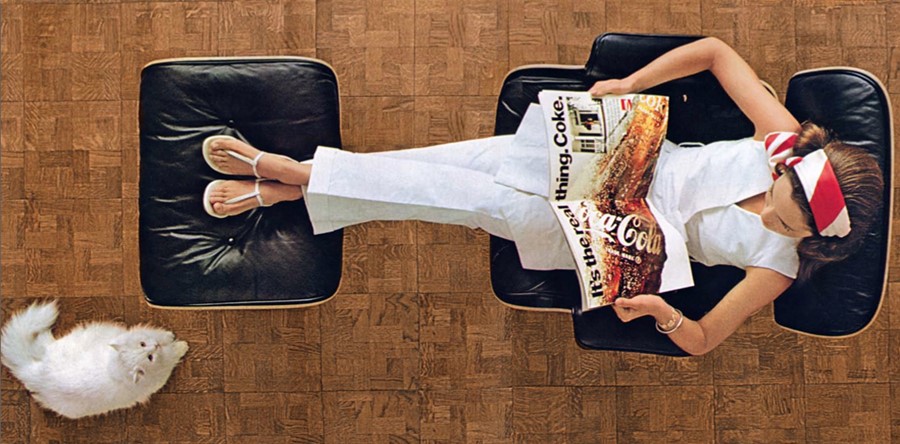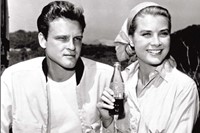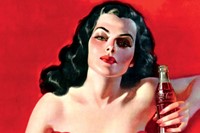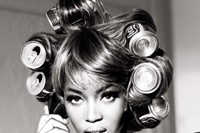Since its inauguration 125 years ago, Coca-Cola has become a fundamental element of popular culture – basic, ubiquitous, indivisible. There are many fascinating components to the Atlanta-based brand – not just its unique recipe (a closely guarded
Since its inauguration 125 years ago, Coca-Cola has become a fundamental element of popular culture – basic, ubiquitous, indivisible. There are many fascinating components to the Atlanta-based brand – not just its unique recipe (a closely guarded secret) but its rich visual history and an iconic logo and bottle design.
There are countless examples of Coca-Cola being referenced in popular culture. In 1950, the brand became the first commercial product to appear on the cover of Time magazine. In the world of fashion, it's Karl Lagerfeld's drink of choice, Tom Ford is known for having a can of Diet Coca-Cola on his slick black minimalist desk and was featured with one in his shoot for the current issue of Another Man. And only this week, AnOther's Guest Lover Nicholas Kirkwood selected a bottle as one of his favourite products of all-time.
The prototype Coca-Cola recipe was formulated in 1886 at the Eagle Drug and Chemical Company, a drugstore in Columbus, Georgia by John Pemberton, originally as a coca wine called Pemberton's French Wine Coca. It was intended as a patent medicine – Pemberton claimed Coca-Cola cured many diseases, including morphine addiction, dyspepsia, neurasthenia, headache and impotence. When launched Coca-Cola's two key ingredients were cocaine and caffeine. The cocaine was derived from the coca leaf and the caffeine from kola nut, leading to the name Coca-Cola (the "K" in Kola was replaced with a "C" for marketing purposes). Coca-Cola once contained an estimated nine milligrams of cocaine per glass, but in 1903 it was removed. In recent months, American public radio programme This American Life claimed they had discovered a recipe in a 1979 newspaper which they believed to be either the version Pemberton brought to market in 1886, a precursor, or an improved version made after it was already on the market.
To celebrate the brand's anniversary and its enduring popularity, ASSOLINE have published a lavish book containing photographs, advertisements, and designs as well as memories from film, social history, and pop culture featuring Andy Warhol, Elvis Presley, Elizabeth Taylor, numerous American presidents, and 1985 film The Breakfast Club. In addition, London's Design Museum is showcasing some of the iconic graphics that have been such an important part of the brand history. The Design Museum’s outdoor tank will focus on the bottle and the logo. The classic Spencarian script design, penned by the company's accountant Frank Robinson, has remarkably remained the same since launch, whereas competitor Pepsi's logo has undergone numerous transformations. The original bottles, debuted in 1894, were Biedenharn bottles, very different from the much later hobble-skirt design.
Coca-Cola, published by ASSOLINE priced £40 and £410 for the limited edition. Coca-Cola Tank installation, runs from 20 May to 3 July at the Design Museum
Text by Laura Bradley



